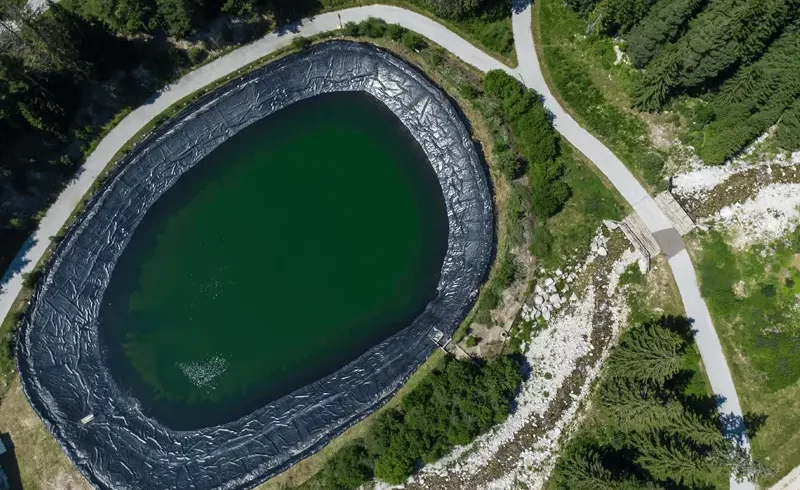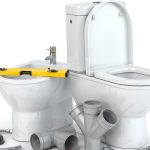
As the global water crisis worsens due to increasing demand, groundwater depletion, and climate change impacts, innovative solutions are needed to reimagine rainwater harvesting. By integrating cutting-edge technology, multi-functional infrastructure, and engaging communities, we can develop sustainable and resilient water systems for a better future.
Harnessing Smart Technology
Smart rainwater harvesting systems use sensors and data analytics to optimize water collection and usage. By monitoring rainfall, water levels, and water quality, these systems can automatically adjust water flow or send alerts when water quality drops below a certain level.
Maximizing Benefits with Multi-Functional Infrastructure
The concept of multi-functional infrastructure can significantly enhance the benefits and efficiency of rainwater harvesting systems. Designing these systems to serve multiple purposes makes them more appealing to potential adopters and maximizes their overall value. For instance, integrating rainwater harvesting systems with landscaping irrigation can save water and reduce the demand for conventional water sources. Simultaneously, these systems can be utilized as emergency water supplies for firefighting, further promoting the value and importance of rainwater harvesting.
Integration in Urban Spaces
Incorporating multi-functional rainwater harvesting systems into urban environments can also contribute to developing sustainable and resilient cities. Urban planners and architects can creatively integrate these systems into building designs, public spaces, and transportation infrastructure, making them an integral part of the urban landscape. This approach promotes efficient water usage and raises public awareness about the importance of water conservation and sustainable practices. Consequently, multi-functional infrastructure can play a vital role in transforming rainwater harvesting systems into a more widely accepted and utilized solution for water management.
Green Roofs and Walls: Combining Aesthetics and Sustainability
Green roofs and walls have emerged as an innovative way to combine aesthetics with sustainability while contributing to rainwater harvesting efforts. By incorporating plants, shrubs, and other vegetation into the building's design, green roofs and walls improve the visual appeal of urban spaces and help capture rainwater and reduce stormwater runoff. This, in turn, minimizes the strain on sewage systems and reduces the risk of flooding in urban areas, especially during heavy rainfall events.
Environmental and Social Benefits
Integrating green roofs and walls into rainwater harvesting systems offers numerous environmental and social benefits. They help mitigate the urban heat island effect by providing natural insulation, reducing energy consumption, and decreasing greenhouse gas emissions. Additionally, green roofs and walls improve air quality by filtering pollutants and producing oxygen. Moreover, green spaces in urban areas have been linked to improved mental health and overall well-being for residents. By incorporating rainwater harvesting systems into green infrastructure, architects and urban planners can create more sustainable, resilient, and livable urban environments while promoting efficient water management.
Community Engagement: Building Awareness and Ownership
Community engagement is a crucial element in the successful implementation and long-term sustainability of rainwater harvesting systems. By involving community members in the design, installation, and maintenance of these systems, a sense of ownership and pride is fostered, increasing the likelihood of the system's continued success. Moreover, community engagement helps raise awareness about water issues, encourages responsible water usage, and promotes the importance of sustainable water management practices.
Collaboration and Education for a Sustainable Future
Collaborative efforts between local governments, NGOs, and community members can result in more efficient and effective rainwater harvesting systems tailored to the specific needs of the community. Educational programs and workshops can be organized to teach community members about the benefits of rainwater harvesting and provide hands-on experience in constructing and maintaining these systems. By actively engaging communities in the process, rainwater harvesting can become an integral part of the local culture and a widely accepted solution for addressing water scarcity, ultimately contributing to a more sustainable and water-secure future.
Recharging Aquifers
Collected rainwater can seep into the ground, recharging aquifers and raising water tables. This process reduces freshwater resource demand and helps prevent flooding, erosion, and soil moisture content improvement.
Economic Incentives
Tax rebates and subsidies can encourage the adoption of rainwater harvesting systems, overcoming initial cost barriers and increasing accessibility to a broader range of stakeholders.
In conclusion, reimagining rainwater harvesting through innovative strategies is essential to address the global water crisis. By adopting smart technology, multi-functional infrastructure, and engaging communities, we can create more sustainable and resilient water systems that benefit everyone.
Collaboration with Governments and Institutions
Collaboration between governments, institutions, and private entities is crucial for rainwater harvesting to impact significantly. By creating policies that promote and support rainwater harvesting initiatives, authorities can ensure these systems are implemented on a larger scale.
Education and Awareness Programs
Education and awareness programs are vital in promoting the benefits of rainwater harvesting. By informing the public about the advantages of these systems, we can encourage wider acceptance and adoption among residential and commercial property owners.
Standardization and Regulation
Establishing standardized guidelines and regulations for rainwater harvesting systems can ensure their efficiency, safety, and effectiveness. Proper monitoring and enforcement of these regulations can also help guarantee the systems' long-term success and sustainability.
Continuous Research and Development
Investing in research and development is essential for driving innovation in rainwater harvesting. By exploring new technologies and techniques, we can further enhance the efficiency and effectiveness of these systems and make them more adaptable to various environments and conditions.
Integrating these additional strategies can revolutionize rainwater harvesting and address the global water crisis more effectively. Cooperation between governments, institutions, private entities, and communities is essential in implementing these innovative solutions on a broader scale, creating a more sustainable future for all.

James Smith is our editor. He is an accomplished and versatile news writer with over a decade of experience covering a wide range of topics, including politics, business, and real estate. Throughout his career, James has been dedicated to uncovering the truth and presenting unbiased, factual reporting to his audience.














